This page contains affiliate links. Please read our disclosure for more info.
Admit it—you came to Italy to eat. It’s certainly the reason we’ve visited the country a dozen times and can’t stay away for long.
Eating in Italy is a serious business and the locals have strict food rules. You can find some of the best food in the world in Italy, but it’s also possible to pay over the odds for a disappointing meal.
Visitors (especially Americans as the food culture is vastly different from the US) are often confused by aspects of dining in Italy and end up starving at 6pm or feeling ripped off.
By following these tips you’ll be able to avoid tourist traps, eat the best food in Italy, and avoid shocking any Italians along the way.
If you are wondering what to eat in Italy, I also share my favourite Italian dishes to try while you are there.
Buon appetito!
Contents
- Video: Tips for Eating in Italy
- Eating in Italy Key Facts
- What Time Do Italians Eat Dinner?
- When Eating in Italy
- Best Food in Italy: Regional Dishes to Try
- Best Places to Eat in Italy
Video: Tips for Eating in Italy
Watch our video of Italian food rules and top tips to make the most of your foodie trip to Italy.
Eating in Italy Key Facts
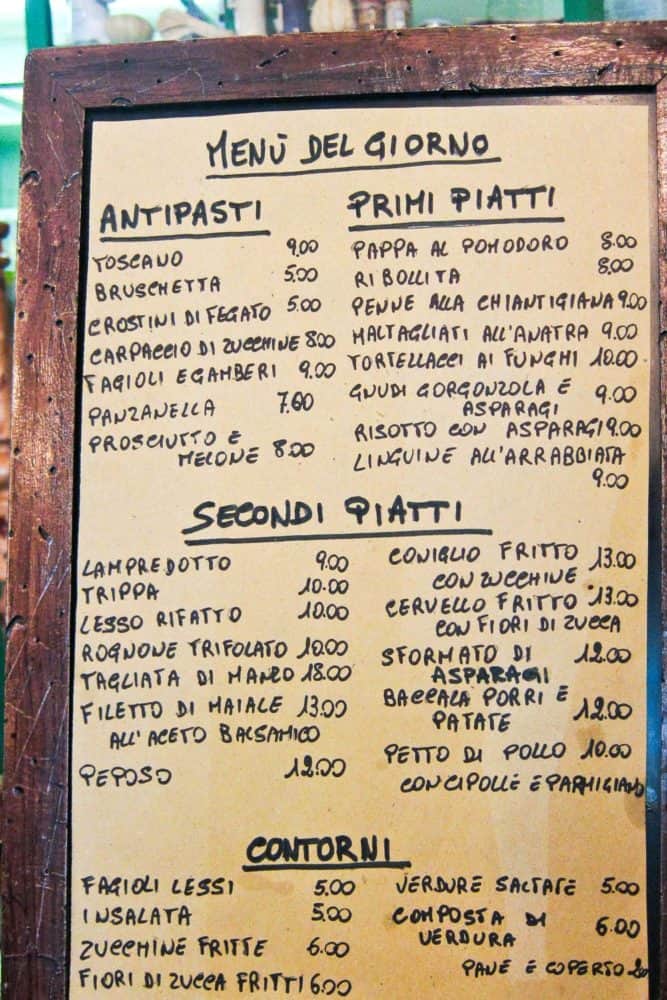
Here are the most important things you need to know when dining in Italy.
Italian menus are divided into the following courses:
Antipasti
Appetisers such as bruschetta (toast with toppings), grilled and marinated vegetables, and meat and cheese platters.
They can be quite filling (or absolutely humungous in Puglia and Basilicata) so we always share. Antipasti are often our favourite part of the meal as they are so diverse, feature regional specialities, and are often vegetable-heavy (less so in the north).
Primi
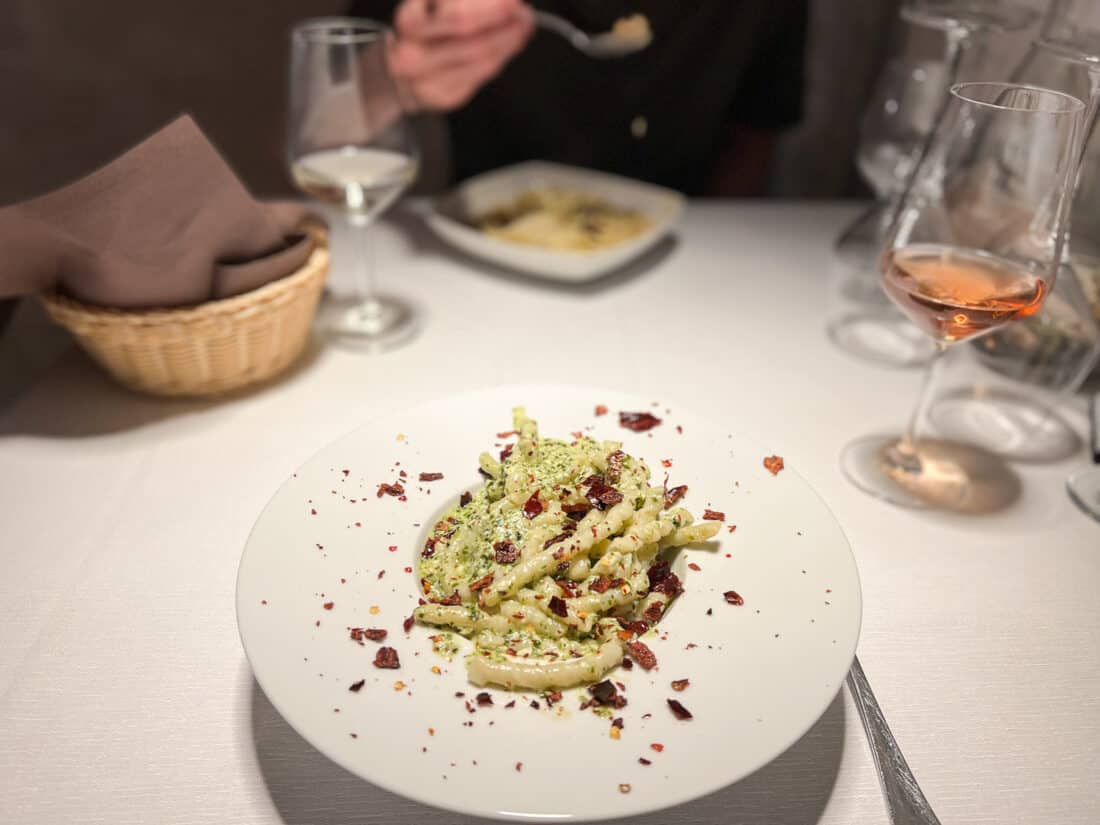
The first course consists of pasta, gnocchi, risotto, or a hearty soup (such as minestrone).
Portions aren’t huge (usually), but it can be enough for a full meal (we usually get an antipasto as well).
There are hundreds of pasta shapes in Italy so learn the regional specialities for your destination. Otherwise, you might not recognise pasta on the menu as it will be called something like trofie (in Liguria) or orecchiette (in Puglia).
Secondi
The second course is meat or fish. It is just that—a slab of meat with nothing on the side.
Very occasionally a restaurant will list a vegetarian secondo like an omelette or platter of grilled vegetables, but you’re better off sticking to the antipasti and primi.
Contorni
Side dishes such as potatoes, french fries, grilled or fried vegetables, salad, and beans.
If you want your meat or fish to have anything with it, you must order it separately.
Note that salad will arrive after you’ve eaten your meat, but hot vegetables will come with it.
Vegetarians can also make a meal from sides. Sometimes we order a side of grilled vegetables as an antipasto if there’s nothing else on the menu we want (or feel free to have some veg after pasta).
Dolci
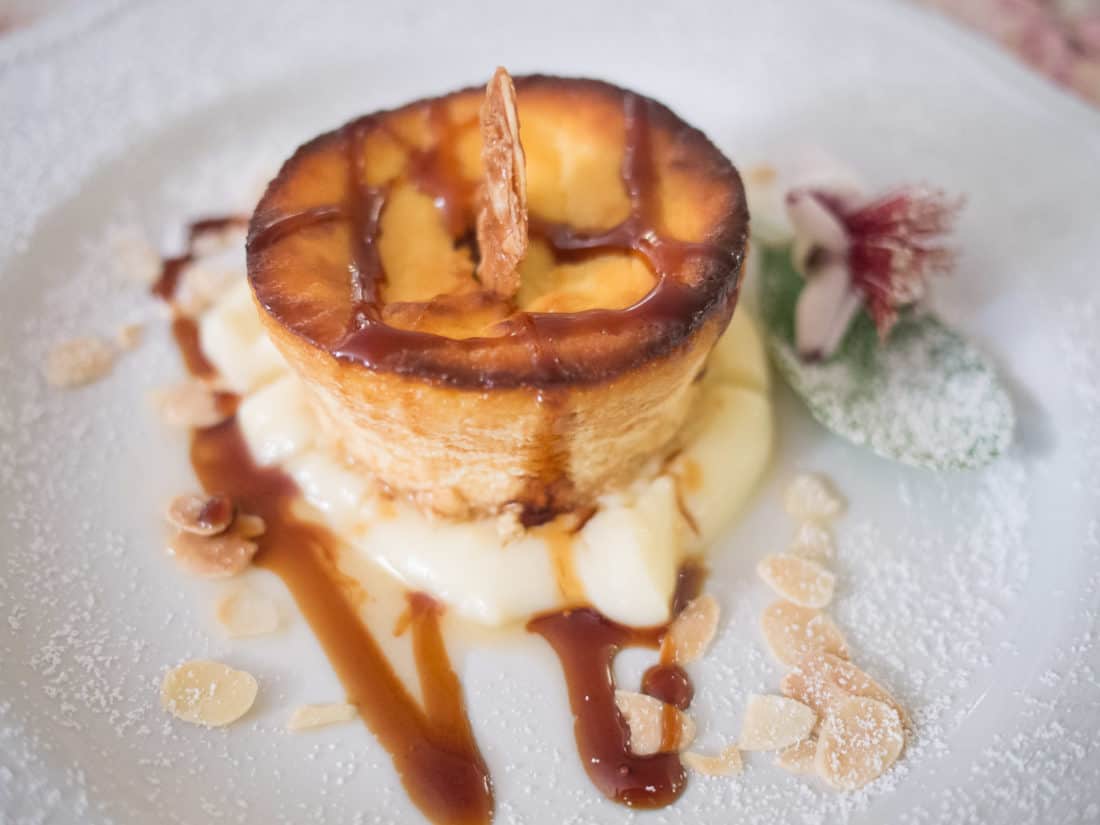
Dolci or desserts. The menu is usually quite simple and will include fruit, gelato, a cake or tart, and a regional speciality.
The creamy coffee flavoured dessert tiramisù is one of the most common desserts all over the country.
A cheaper alternative to dessert in a restaurant is heading to a gelateria and enjoying a cone on an evening stroll.
Caffè
It’s very common to finish your meal with un caffè (espresso). It comes after dessert, not with it.
Italian dishes vary widely depending on the region. You can get pizza and pasta with tomato sauce everywhere, but don’t expect to find spaghetti carbonara in Puglia—stick to local dishes instead. I share some of my favourites at the end of this post.
What Time Do Italians Eat Dinner?
Most Italians eat dinner around 8pm or 9pm. They may eat later in the summer, especially in the south of the country when dinner could be at 10pm or even later.
Visitors should be aware that opening hours at Italian restaurants are limited.
They open for lunch between 12pm and 1pm and close between 2pm and 3pm. Italians don’t eat lunch later than 2pm.
Restaurants are then closed for an afternoon/early evening break.
They open again for dinner at 7.30pm or 8pm. Pizzerias might open a bit earlier at 7pm.
Make sure you plan for this when eating out in Italy. Grocery stores (except for major supermarkets) also close in the afternoon.
Below I’ve included tips on what to do if you get hungry in the afternoon or early evening (it’s a common problem for us!).
When Eating in Italy
Do
- Eat gelato every day. It’s that good.
- Look for the signs produzione propria and artigianale in gelaterias, which means that the gelato is made on-site and in the old-fashioned way with natural ingredients.
- Order more than one flavour of gelato. Even if you order a small size (which is usually plenty), you can choose two flavours. My personal favourite combination is pistachio and chocolate.
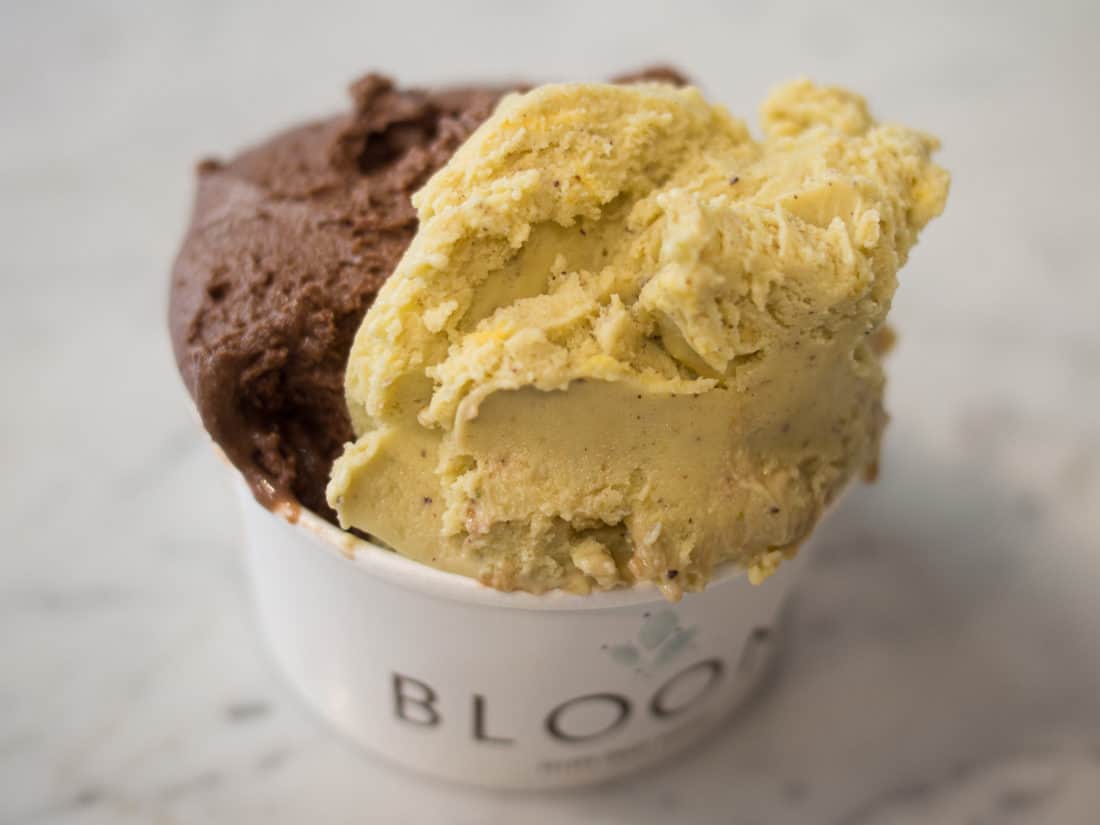
- Take a food tour to learn more about Italian food culture and get some local restaurant tips. We learned so much and ate so well on the Eating Italy Taste of Testaccio food tour in Rome (read our Eating Italy review). They also run delicious-sounding food tours in Florence and Naples. Our Taste Bologna food tour was one of our favourite things to do in Bologna.
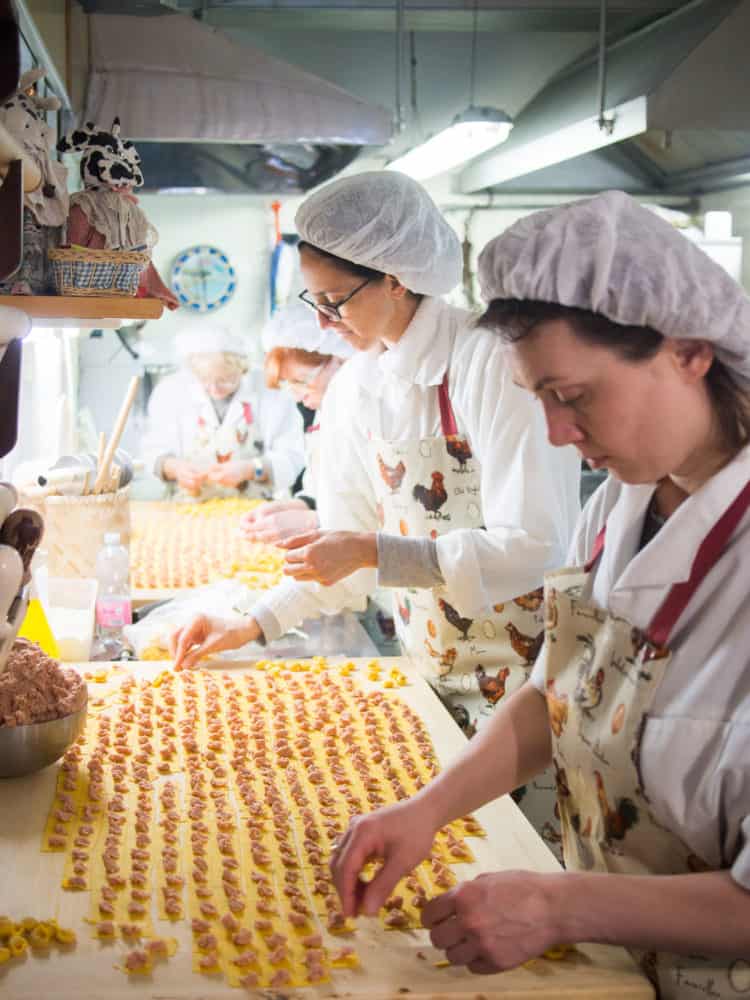
- Read Eating My Way Through Italy by Elizabeth Minchelli which explores the differences between regional cuisines. It includes personal stories as well as practical tips and restaurant recommendations. I want to do her DIY pizza tour of Naples!
- Avoid restaurants near major tourist attractions. If you do choose to eat on a popular piazza like Piazza Navona in Rome, accept that you are paying for the view and not for quality food. Perhaps just have a drink instead.
- Try regional specialities. Do some research before you go or ask a local. Read about our favourites in Puglia, Liguria, Sicily, Tuscany, and Piemonte. If you order a non-local dish, it will likely be disappointing.
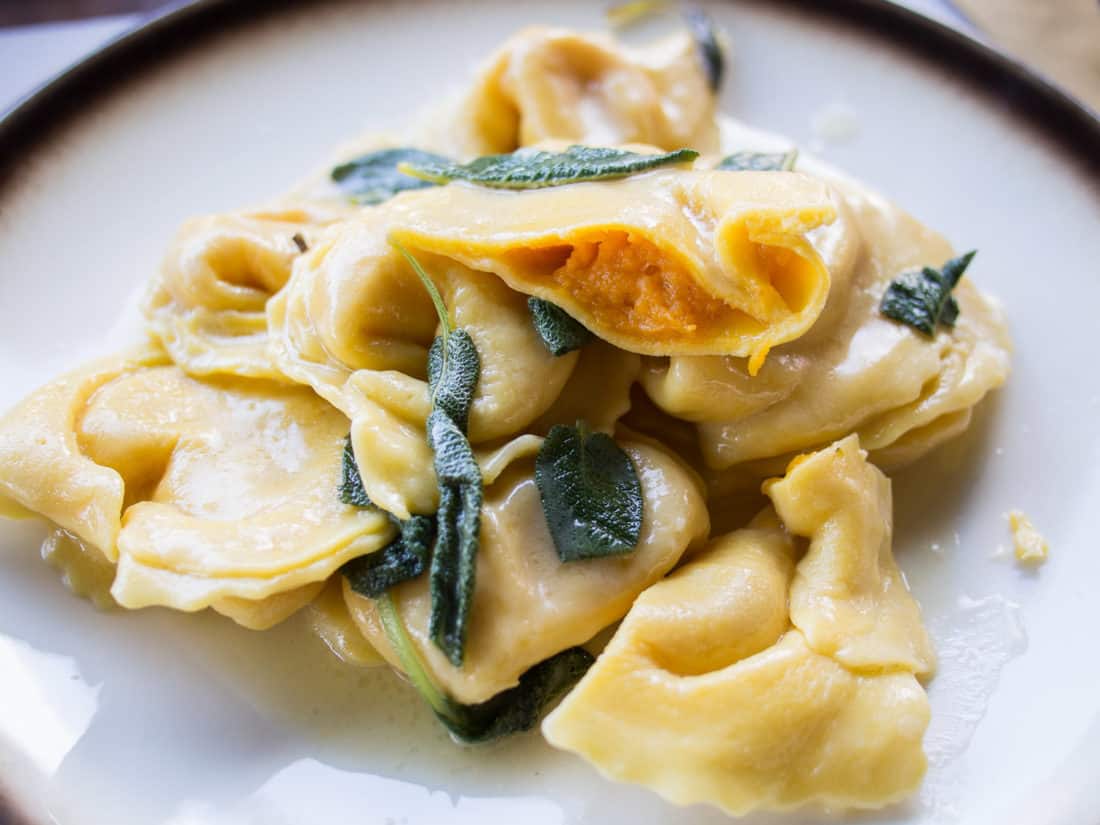
- Order un caffè (espresso) after dessert, not during the meal.
- Visit bars at any time of day. They are more like cafes and are family-friendly. Stop by for a coffee, snack, soft drink, or alcoholic beverage from breakfast until late at night. They can be a good place for a sandwich if you get hungry mid-afternoon, although quality varies and some bars close in the afternoon (especially in small towns).
- Drink coffee standing at the bar (al banco) to avoid paying extra to sit down—up to four times more in touristy areas.
- Check the bar menu if you really want to sit down. It’s usually on the wall and you can see the prices for banco (standing) and tavolo (sitting).
- Eat pizza with your hands. In a pizzeria you’ll cut the pizza into slices yourself then feel free to use your hands.
- Buy slices of takeaway pizza or focaccia with different toppings for a cheap snack. This is your best option if you get hungry outside the usual meal times. You usually choose how much you want and pay by weight.
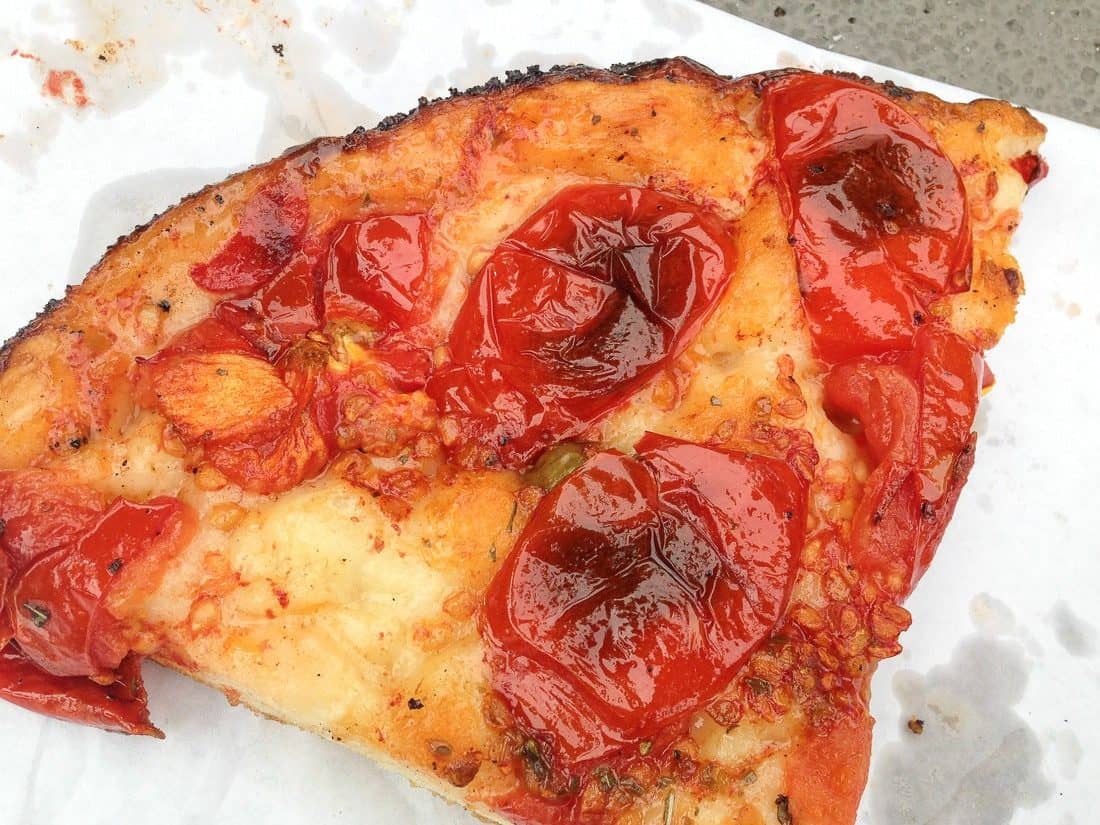
- Stick with a primo (first course, usually pasta, risotto or soup) if you are vegetarian—a secondo (second course) is almost always meat and a primo is tasty and filling enough (and cheaper).
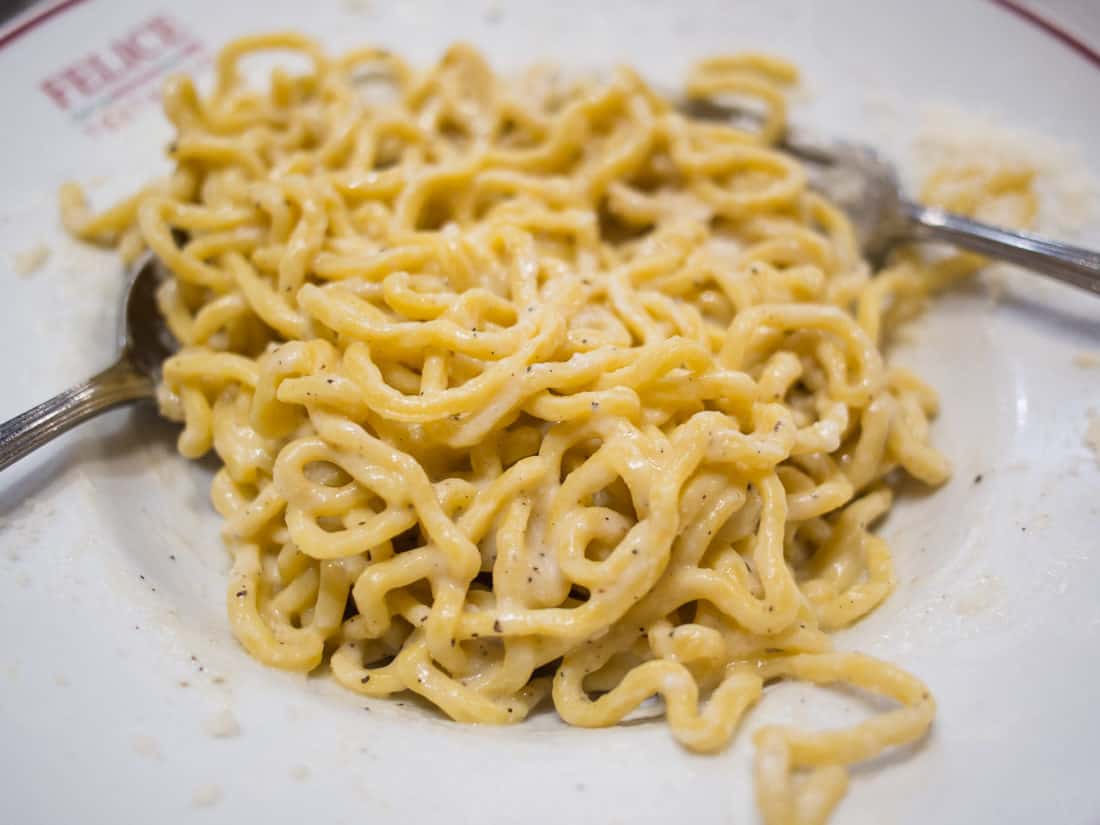
- Order wine (or just water) with a meal—Italians only drink beer and soft drinks with pizza.
- Ask for a glass of wine even if only bottles are listed on the menu. There is always the option of un bicchiere (glass) or un quarto (quarter litre) or mezzo litro (half litre) jug of house wine. The house wine is very affordable and often the same price as water—we’ve had a half litre for as low as 2 euros!
- Choose your mineral water naturale (normal) or frizzante (fizzy). You’ll usually be asked this as soon as you sit down as a litre bottle is served with every meal. Unfortunately, Italians don’t drink tap water at restaurants (although it is safe to drink).
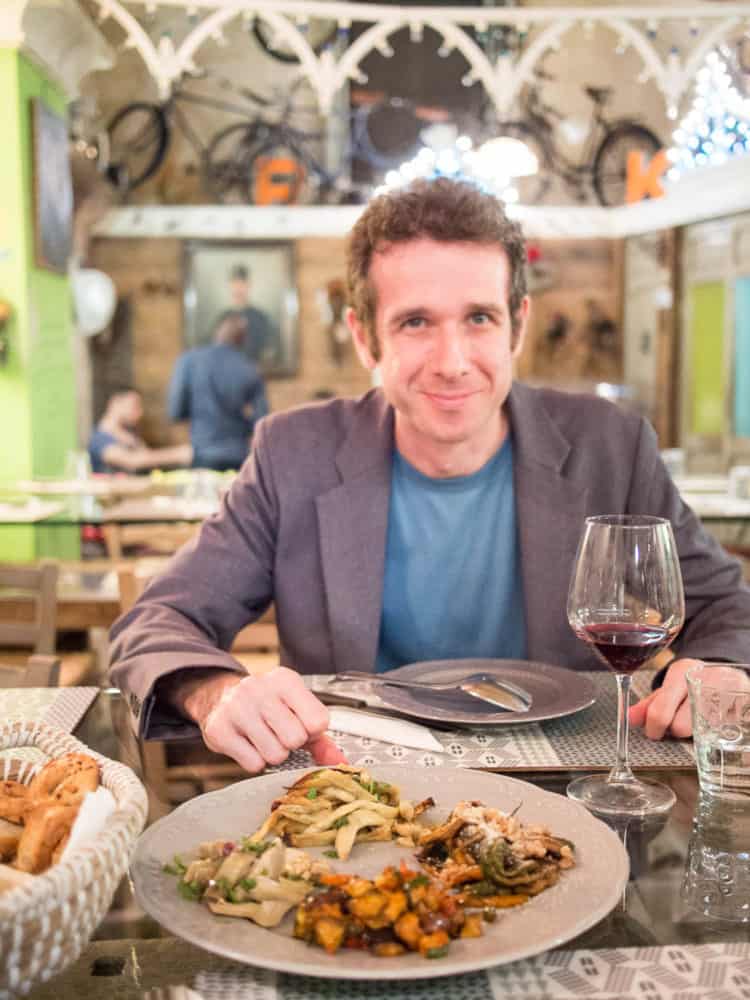
- Enjoy a pre-dinner drink or aperitivo at a bar. This is usually a glass of wine or cocktail. My favourite is a Spritz made with Aperol (or Campari), prosecco, and soda water. Bars always provide a snack with your drink such as potato chips, olives, nuts, and/or focaccia. This helps keep us going until restaurants open.
- Fill up on the aperitivo buffets that some bars offer for free when you buy a drink in the early evenings (usually from around 6-8pm). If you are on a tight budget, it could even be enough for dinner, which is why it’s known as apericena. Although it’s frowned upon if you eat too much—in general it’s best to stick with one plate of food per drink. The best place for apericena is northern Italy, especially Milan and Turin.
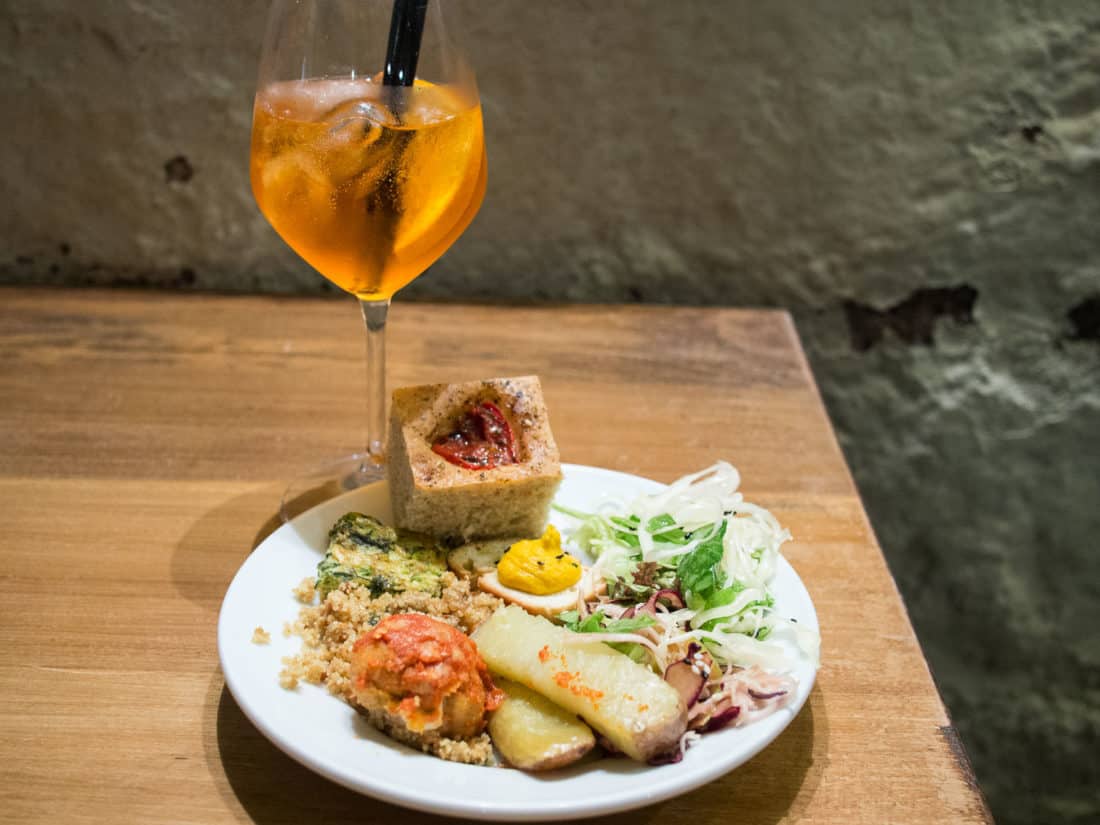
- Buy olive oil from a farm (vineyards often make olive oil too). You’ll never go back to the supermarket stuff. To learn more about this liquid gold take an olive oil tour or stay on an olive farm—we love Masseria Il Frantoio in Puglia (read our review here).
- Visit a vineyard for a wine tour and tasting. We did a fantastic wine tour in Umbria and have also enjoyed winery visits in Tuscany, Puglia, and the Barolo area of Piemonte.
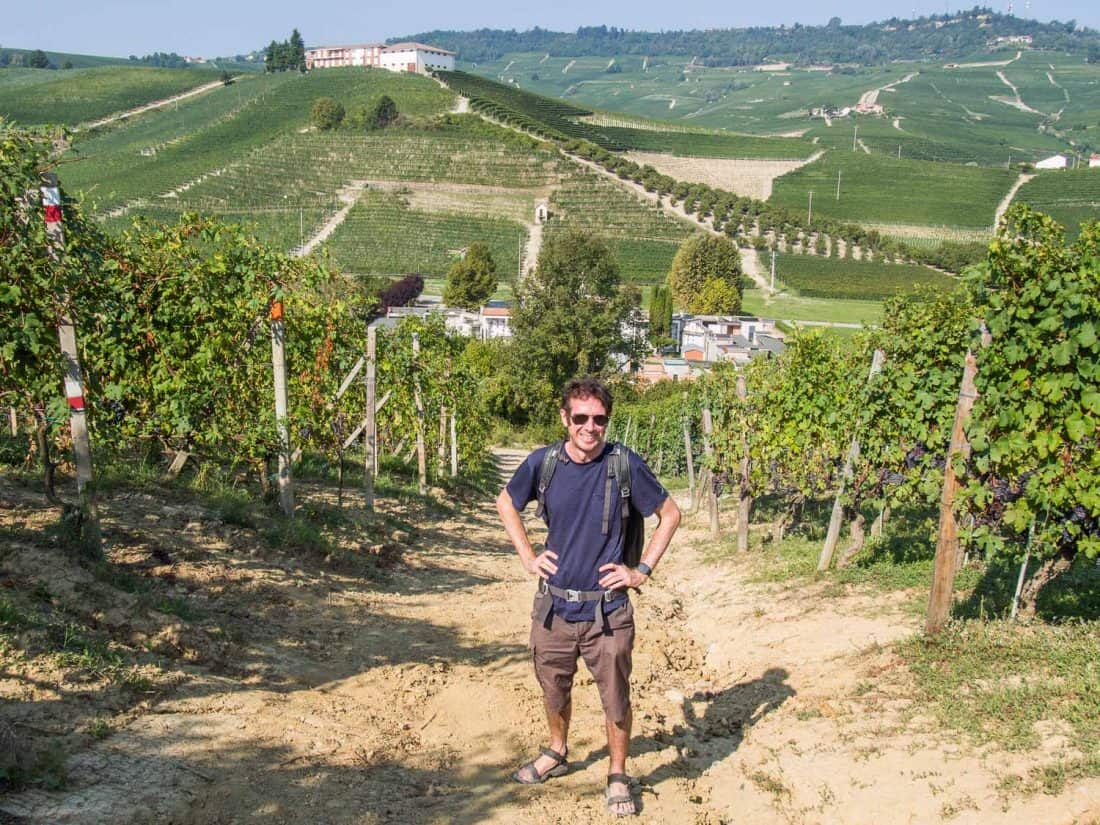
- Try real aged balsamic vinegar. The 25-year-old stuff is like nothing you’ve tasted before. We visited a family-run acetaia in Modena on a day trip from Bologna.
- Picnic. Even the simplest things taste amazing in Italy so buy some bread, cheese, olives, and fruit from an alimentari (small grocery store), market or supermarket and find a park to enjoy them in. Testaccio market in Rome is our favourite place for this.
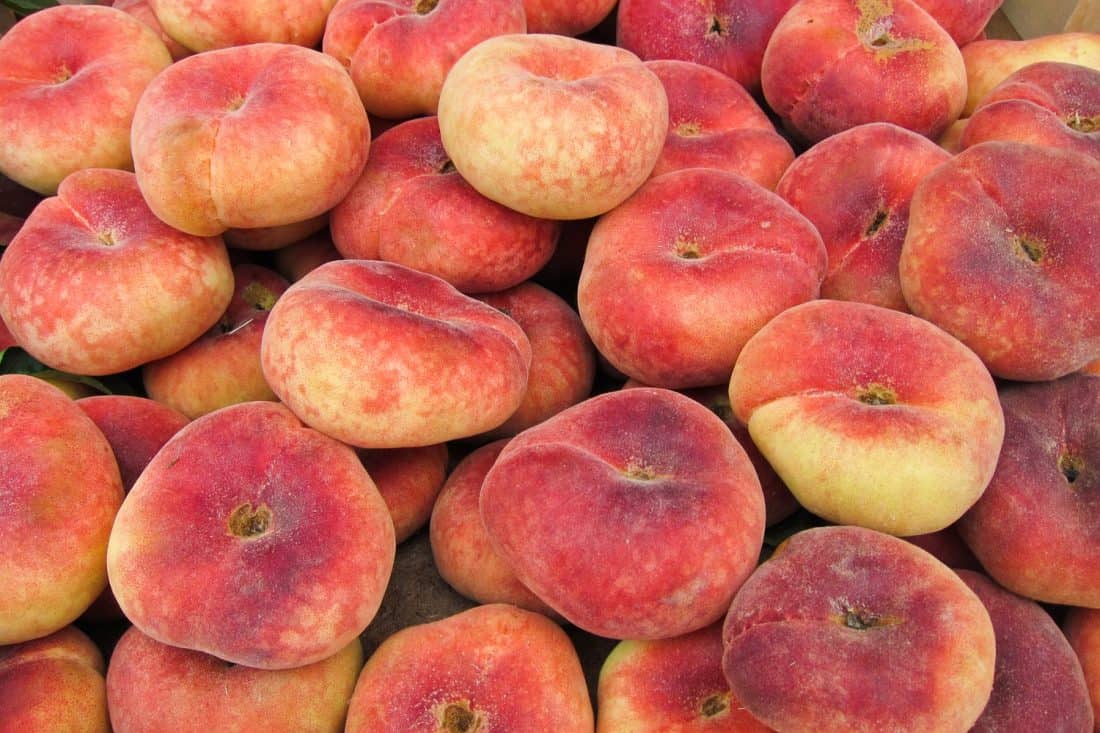
- Use an Italian phrasebook or app to help you decode the menu so you don’t have to eat in restaurants with English menus (which are usually badly translated anyway). This list of Italian restaurant phrases should also help.
- Learn to cook your favourite dishes so you can recreate them at home. We enjoyed cooking classes in Puglia and Tuscany. Get Your Guide has lots of cooking classes on offer including making pasta and tiramisù in Rome, pizza in Naples, and a market and cooking experience in Florence.
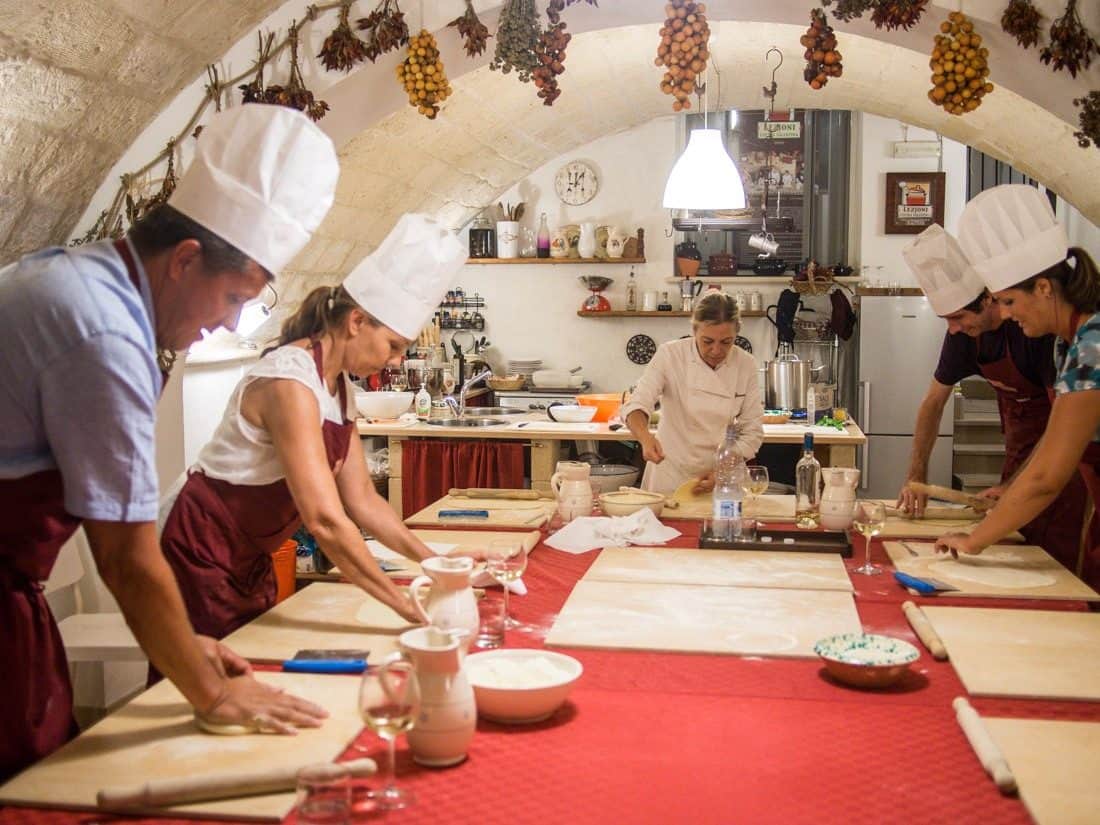
- Ask for the bill/check (il conto). Restaurant staff will not automatically bring it as they don’t want to rush you. It can take a while as they assume you’re not in a hurry.
- Enjoy a digestivo (after-dinner liquor) after your meal. The best ones are homemade and they can be bitter like an amaro, sweet like limoncello, or strong like grappa. If your server offers you a digestivo after you’ve received your bill, it’s on the house.
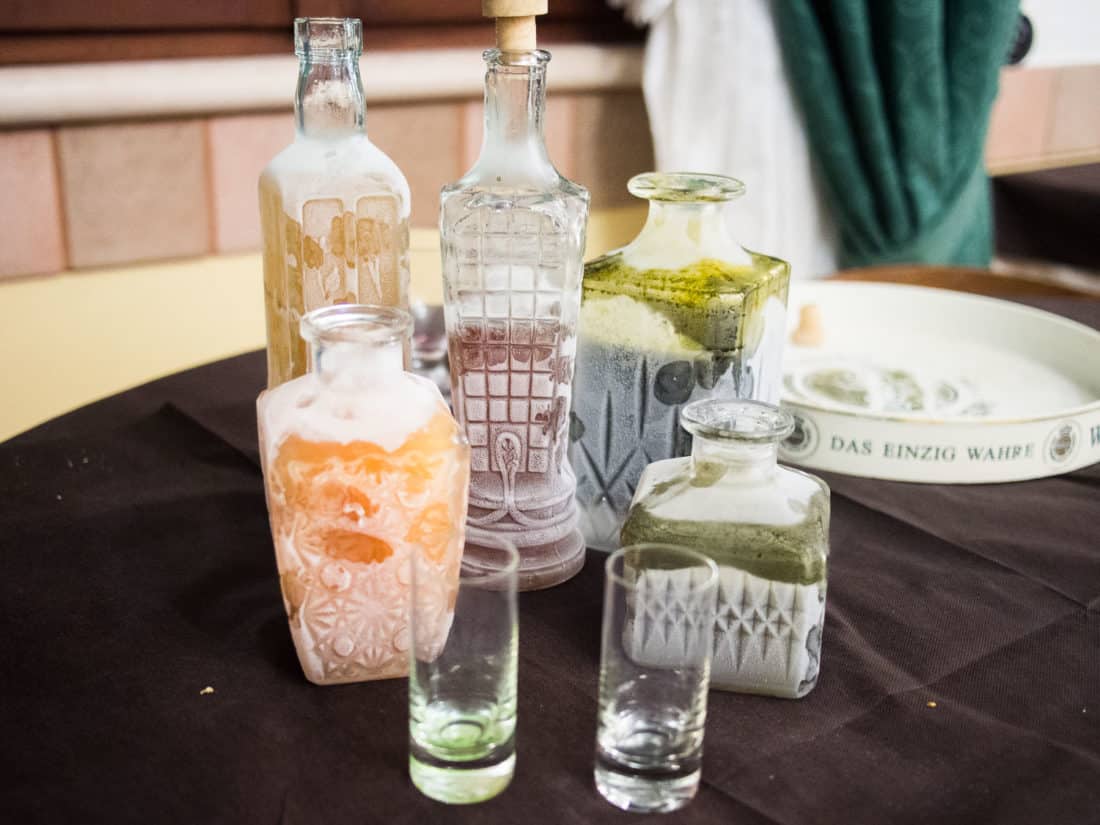
Don’t
- Expect restaurants to be open for cena (dinner) until 7.30pm or 8pm. Typically Italians eat dinner at restaurants around 9pm (earlier in the north, later in the south). Pizzerias often open earlier at 7pm.
- Feel obliged to order every course—an antipasto (starter), primo (first course), secondo (second course) with contorno (side dish), and dolce (dessert) is a lot of food. Pick and choose as you please. You could also order an antipasto or primo and then decide afterwards if you’d like to order another course.
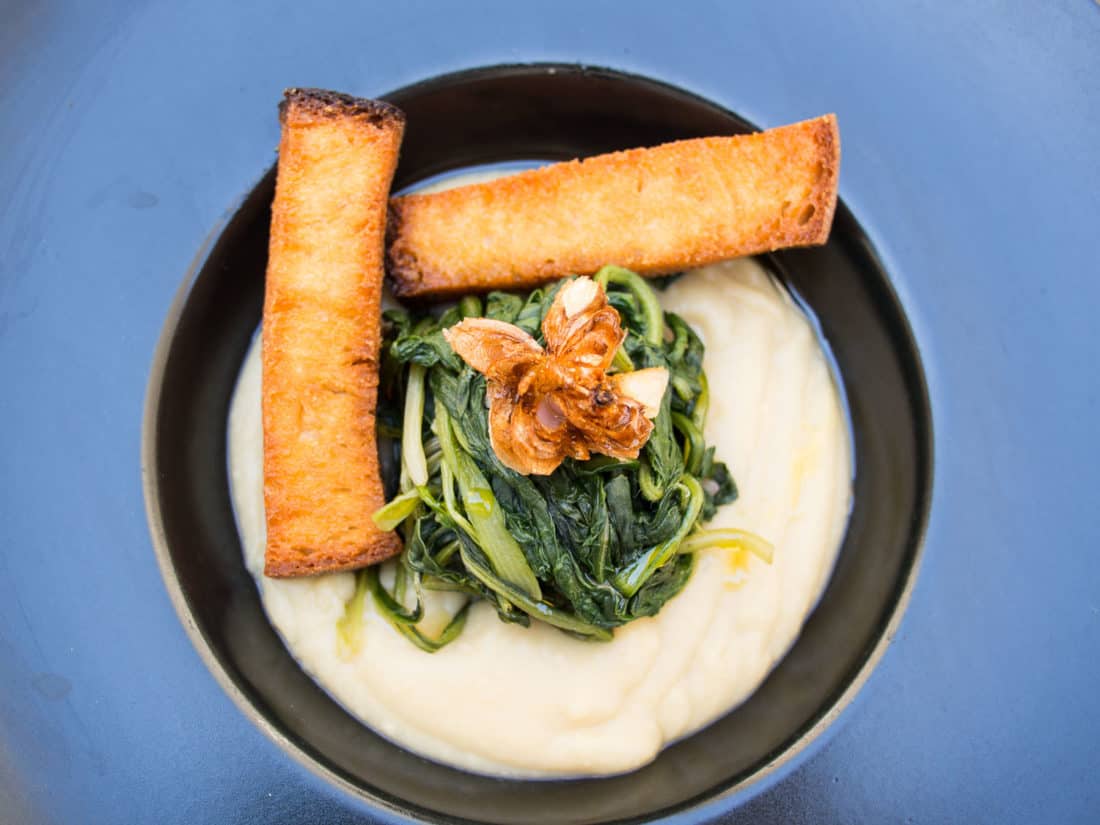
- Order cappuccino after 10am. Later in the day, and especially after meals, stick with an espresso (ask for un caffè).
- Ask for a latte – It means milk in Italian. Make sure to order un caffè latte if you want a coffee with milk. It will be served in a tall glass with more liquid and less foam than a cappuccino.
- Expect much for breakfast. A coffee and cornetto (croissant, called brioche in northern Italy) standing at a bar is the norm. The best breakfasts we’ve had have been at family-run B&Bs like La Corte dei Pastori in stunning Matera where we were treated to a spread of bread, cakes, pastries, and fruit. You won’t find eggs or other hot breakfast dishes.

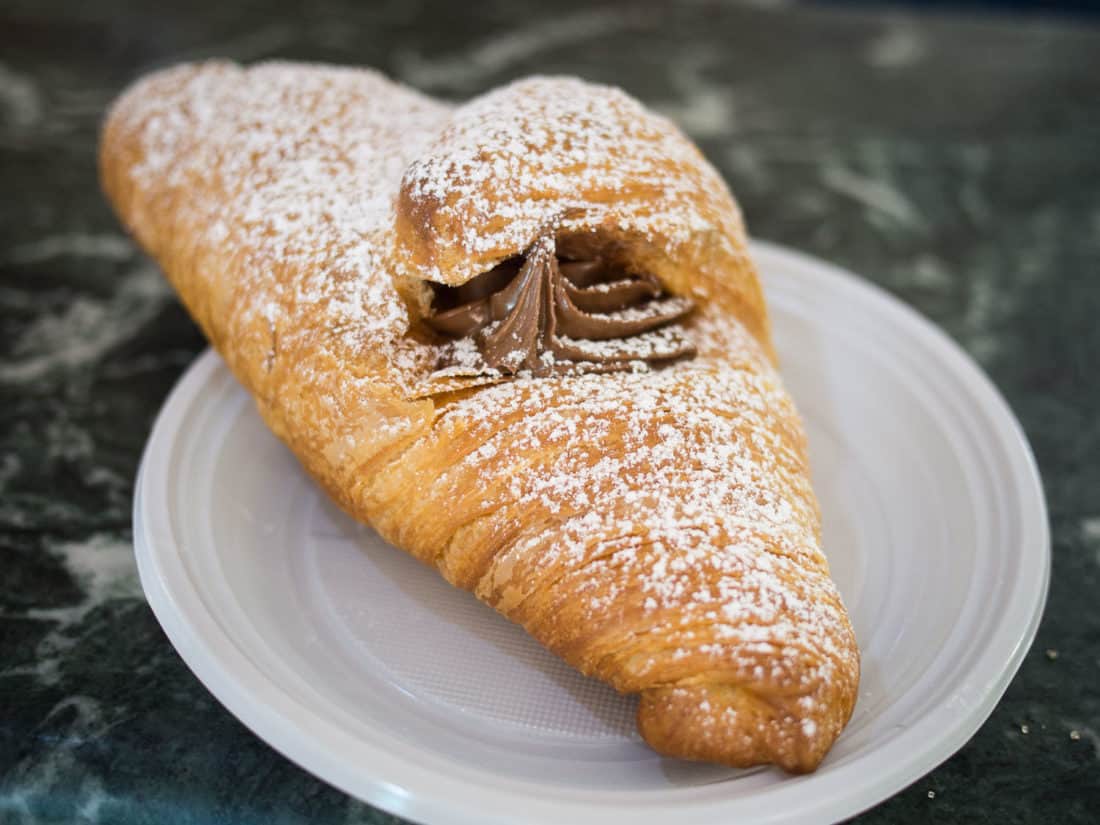
- Eat in a gelateria that has bright green mint or pistachio gelato—the ingredients won’t be natural. Towering puffy mounds are another sign that they use chemicals. If the gelato is hidden away in metal tins, it’s a good sign it will be high quality.
- Go to a restaurant with a tourist menu or with someone outside encouraging you to come in.
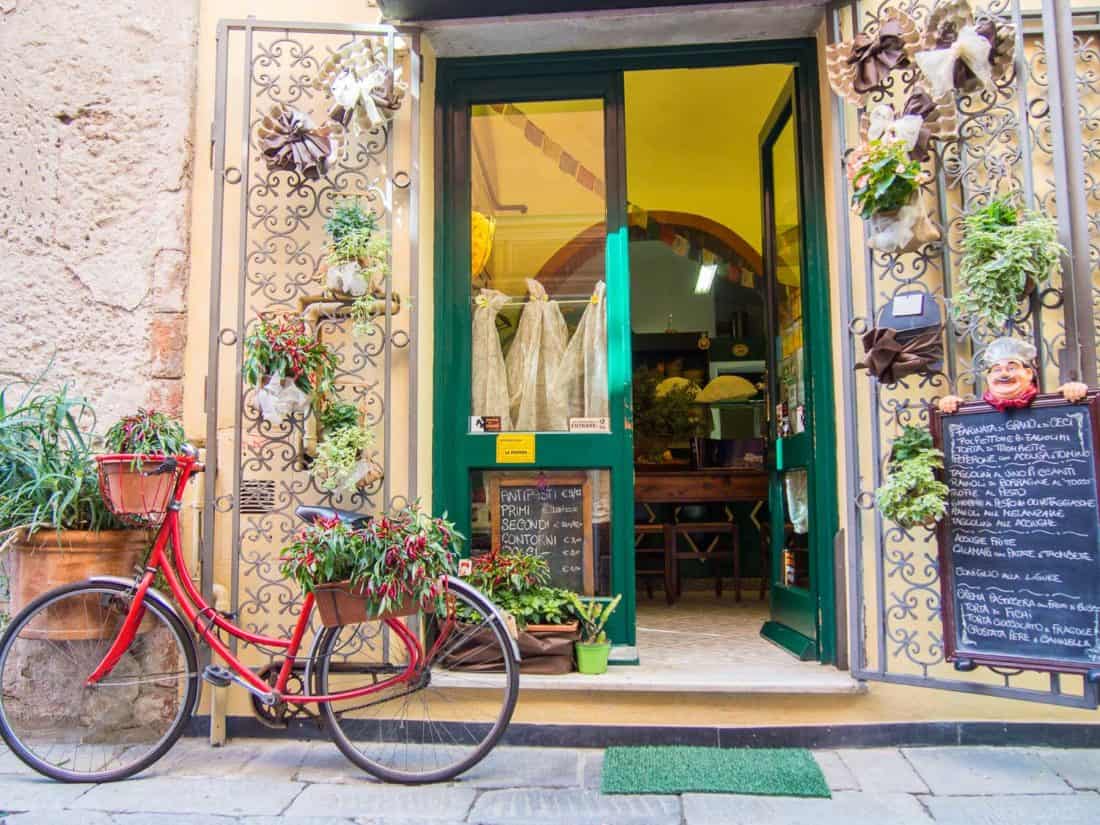
- Eat in a pizzeria for lunch. The best places only open in the evenings as the wood-burning pizza oven takes a long time to reach the right temperature. During the day stick with pizza by the slice (pizza al taglio) served from takeout places.
- Order peperoni pizza unless you want it topped with bell peppers. Order a salami pizza if you want it with meat.
- Ask for chicken or pineapple on your pizza. Italians consider this a travesty.
- Share a pizza—even kids have one to themselves.
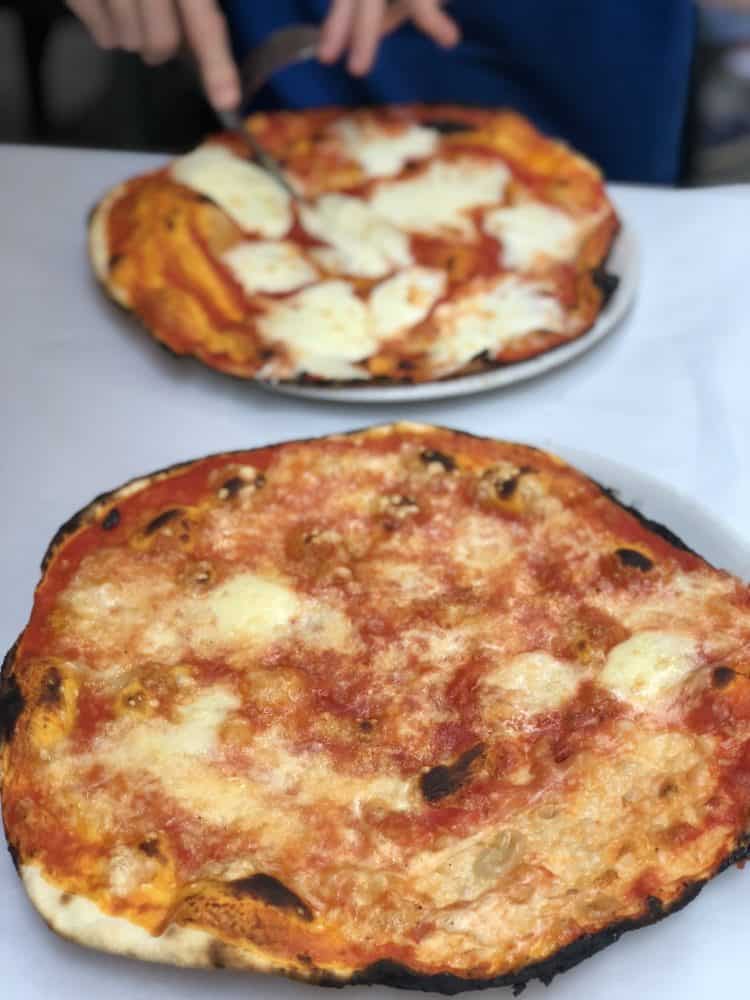
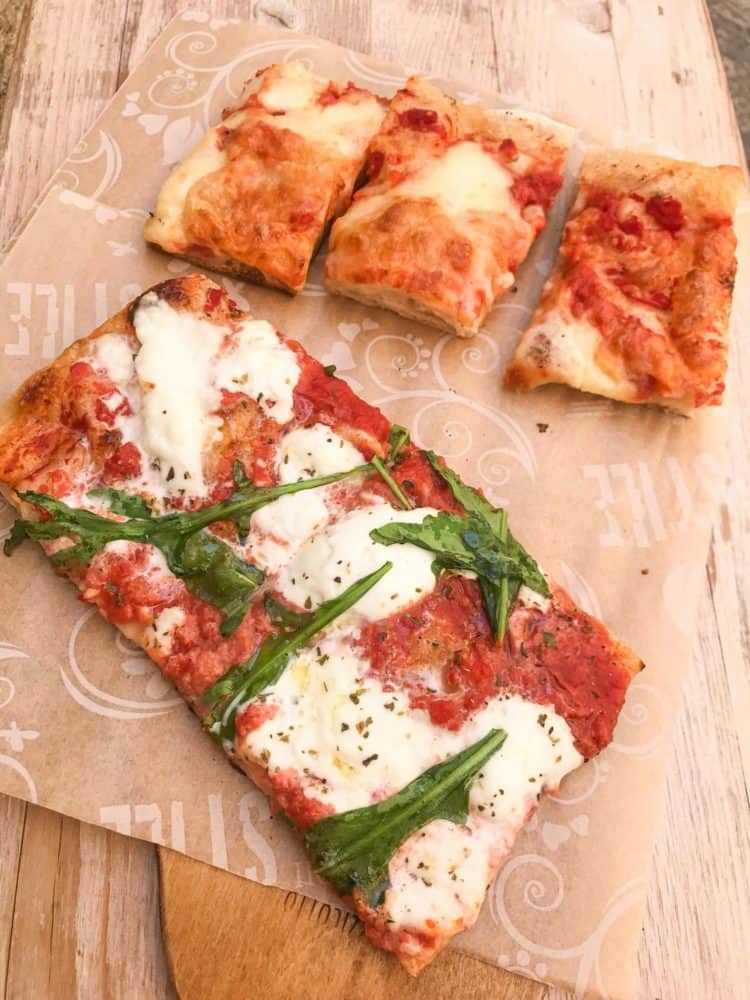
- Ask for oil and vinegar to dip your bread in. That’s not a real Italian thing. Bread is not served with butter either.
- Eat bread with your pasta. Instead, use it to fare la scarpetta (literally “make a little shoe”) and mop up the leftover sauce on your plate.
- Order spaghetti bolognese. It doesn’t exist in Italy. Instead, ask for tagliatelle al ragù in its hometown Bologna if you want meat pasta.
- Ask for parmesan on your pasta. Italians are strict about what is supposed to have cheese on it and what’s not. You’ll be offered parmesan if it’s appropriate.
- Eat spaghetti with a spoon. Don’t cut it with a knife either. A fork is the only acceptable utensil to use.
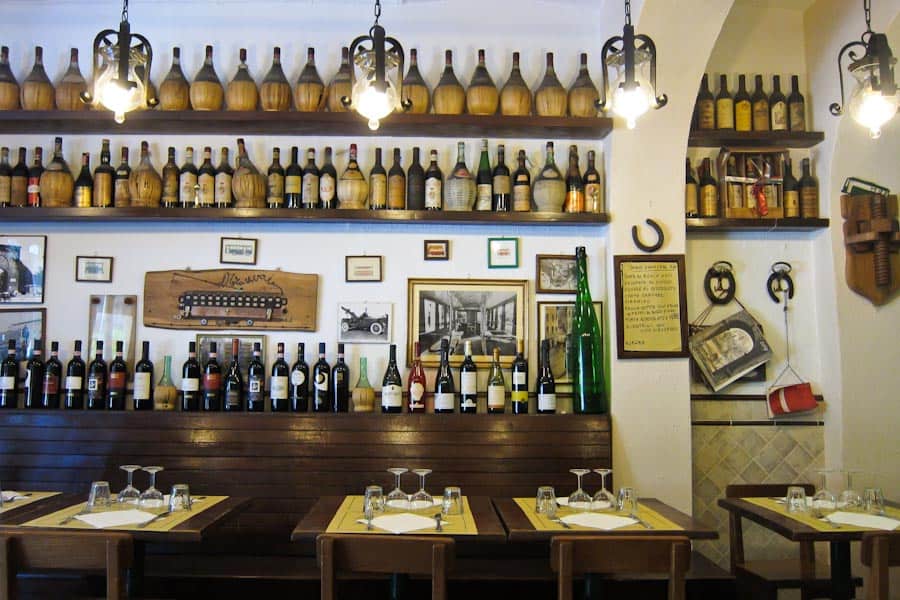
- Expect fancy salad dressings. Italian dressing doesn’t exist in Italy. Instead, you are provided with olive oil, vinegar, and salt to dress your own salad at the table. When the ingredients are this good, you don’t need anything more.
- Expect complicated salads. If the menu says tomato salad, it will just be a plate of sliced tomatoes (maybe with basil). Again, you can get away with simplicity when the produce is fresh and flavourful.
- Be surprised if your salad turns up after your main. It’s not eaten as a side dish in Italy.
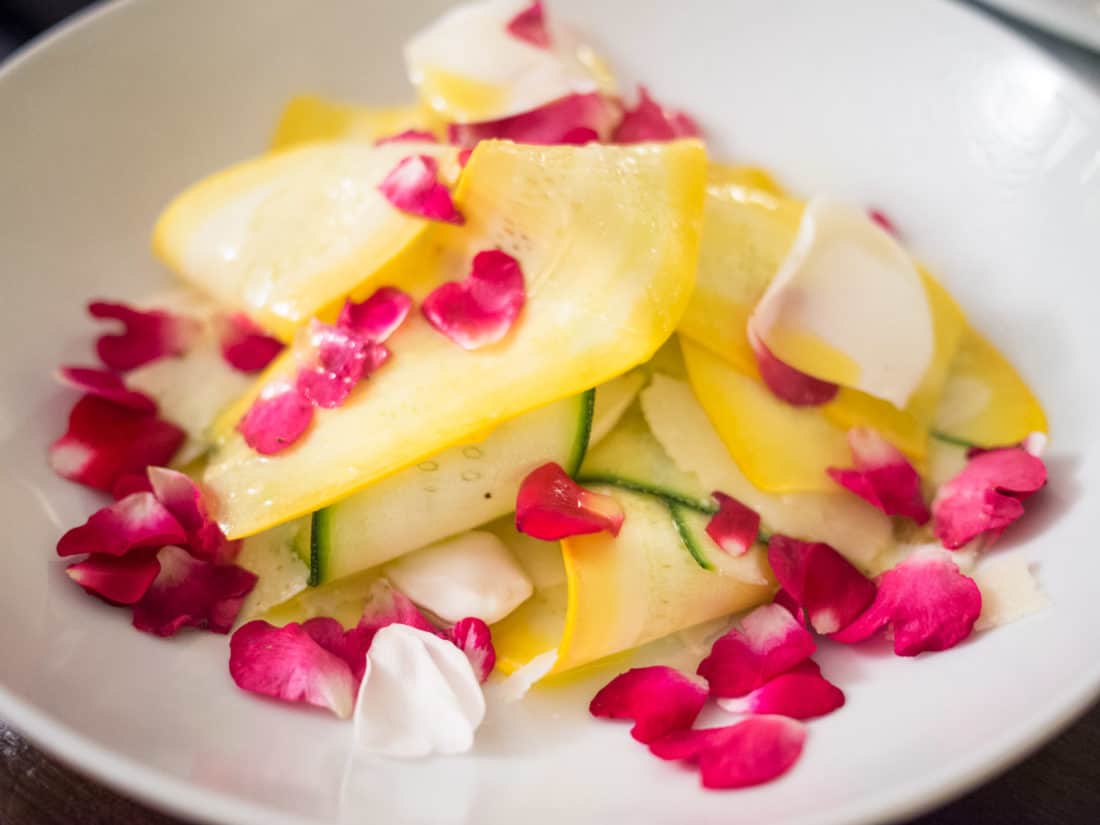
- Be surprised by extra charges on your bill. Restaurants usually charge from €1-2.50 per person for pane e coperto (bread and cover charge) even if you don’t want the bread. It should be written on the menu.
- Feel like you have to tip. It’s optional.
- Assume everywhere takes credit cards. Some restaurants in rural areas are cash only, although this is much less common these days.
- Expect American-style service. Restaurant staff can be a little brusque, especially in the big cities. Don’t take it personally.
- Be offended if you are turned away from an empty restaurant. They will have bookings for later in the evening, and in Italy you have the table for the whole night.
- Touch produce at market stalls. Tell the vendor what you want (or point) and they will select items for you.
- Ask for food to go at restaurants. It’s not customary to get a doggy bag with leftovers. Take out isn’t common either except at pizzerias. Even coffee isn’t ordered to go.
- Rush. Meals can last hours in Italy—savour them.
Best Food in Italy: Regional Dishes to Try
If you are wondering what to eat in Italy, here are some of our favourite dishes. Remember that food in Italy is strictly local, so you won’t find most of these dishes all over the country.
Dishes found everywhere
- Pizza Margherita – Found all over the country, pizza is, of course, a must eat in Italy. It’s best in Naples but we also like the Roman style with an ultra-thin and crispy base. There are other varieties, but the Margherita is a classic for a reason.
- Parmigiana di Melanzana – One of my favourite things to eat in Italy is found mainly in the south—Puglia, Campania, and Sicily. Layers of fried eggplant are baked with cheese and tomato sauce. It’s usually in the antipasti section of the menu but sometimes it’s listed as a primo.
- Pasta al Pomodoro – Pasta served with tomato sauce is simple but so delicious when it’s done well. It won’t be listed like this on the menu; instead of pasta, it will say the local variety such as orecchiette al pomodoro in Puglia (a pasta shape which resembles little ears).
- Penne all’Arrabbiata – Short tubes of pasta with a spicy tomato sauce. It originates from Rome but is found in many places.
- Bruschetta al Pomodoro – One of our favourite starters is a simple garlic-rubbed toast topped with fresh tomato, basil and olive oil. It also comes with other toppings.
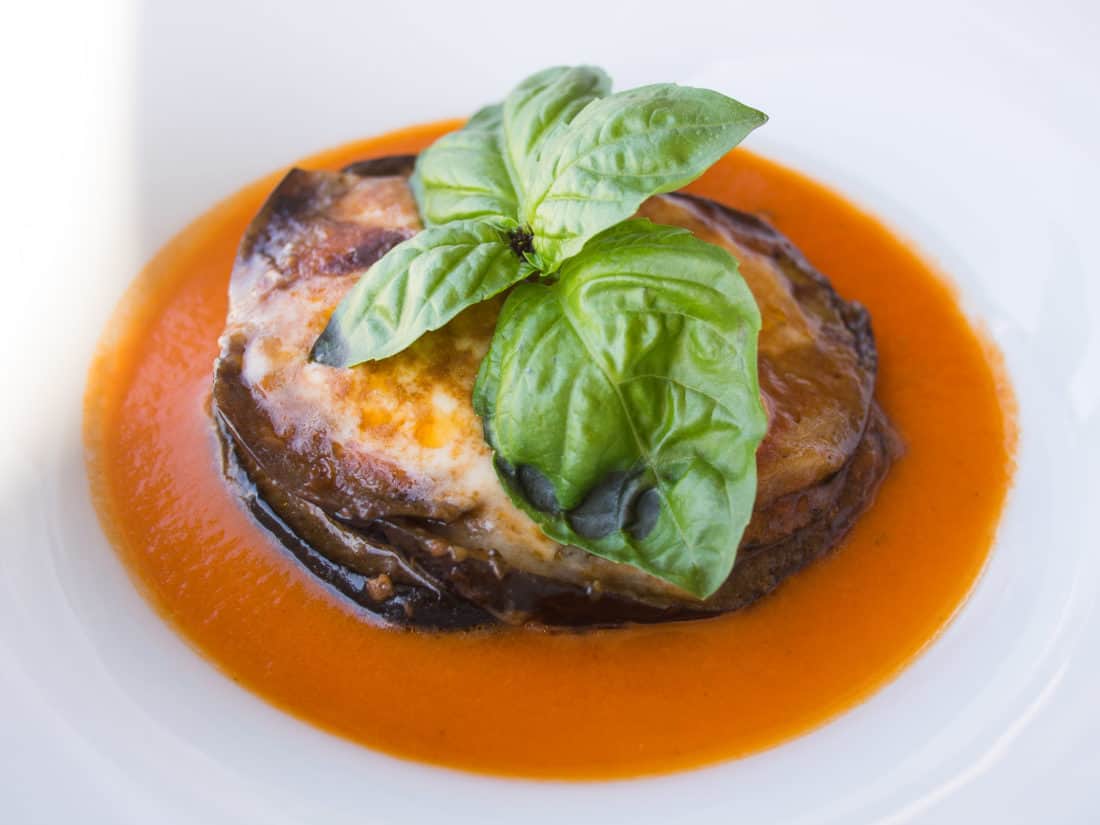
Lazio (Rome)
- Tonnarelli Cacio e Pepe – Thick spaghetti-like pasta with pecorino romano cheese and black pepper. Oh so good! My favourite place for it is Flavio al Velavevodetto in the Testaccio neighbourhood of Rome.
- Pizza Bianca – This is the type of pizza you get in squares from a bakery or takeaway place not at a sit-down pizzeria. It’s plain dough (almost like focaccia) drizzled with olive oil and sprinkled with sea salt and rosemary. Fresh out of the oven it’s divine. My favourite place for it is Antico Forno Roscioli in Rome’s historic centre.
- Pizza di Patate – Another type of delicious takeaway pizza slice features thinly sliced potatoes and no tomato sauce. Sometimes it comes with cheese.
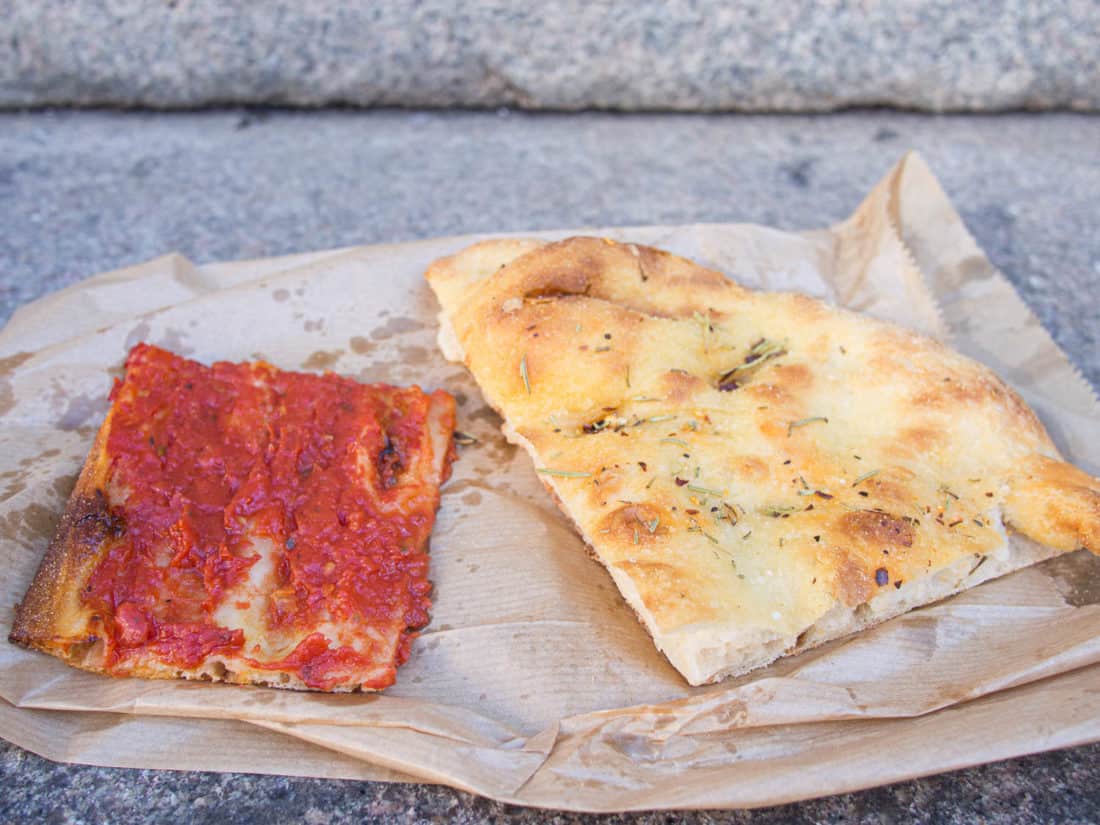
Liguria (Genoa, Portofino, Cinque Terre)
- Trofie al Pesto – You can find pesto (a basil sauce) outside Liguria but it’s best in its home region. Trofie are little twists of pasta and potatoes and green beans are sometimes added to the dish.
- Pansotti alla salsa di noci – Cheese and spinach stuffed ravioli with walnut sauce.
- Antipasti misto – The mixed antipasti (appetiser) plates are superb in Liguria and can be adapted for vegetarians. They usually include torta di verdura, a local vegetable pie filled with cheese and greens or vegetables.
- Focaccia – Liguria makes the best focaccia we’ve had in Italy. This olive oil bread is eaten plain or topped with olives, tomatoes, onions or other ingredients. It’s sold in bakeries and you usually pay by weight.
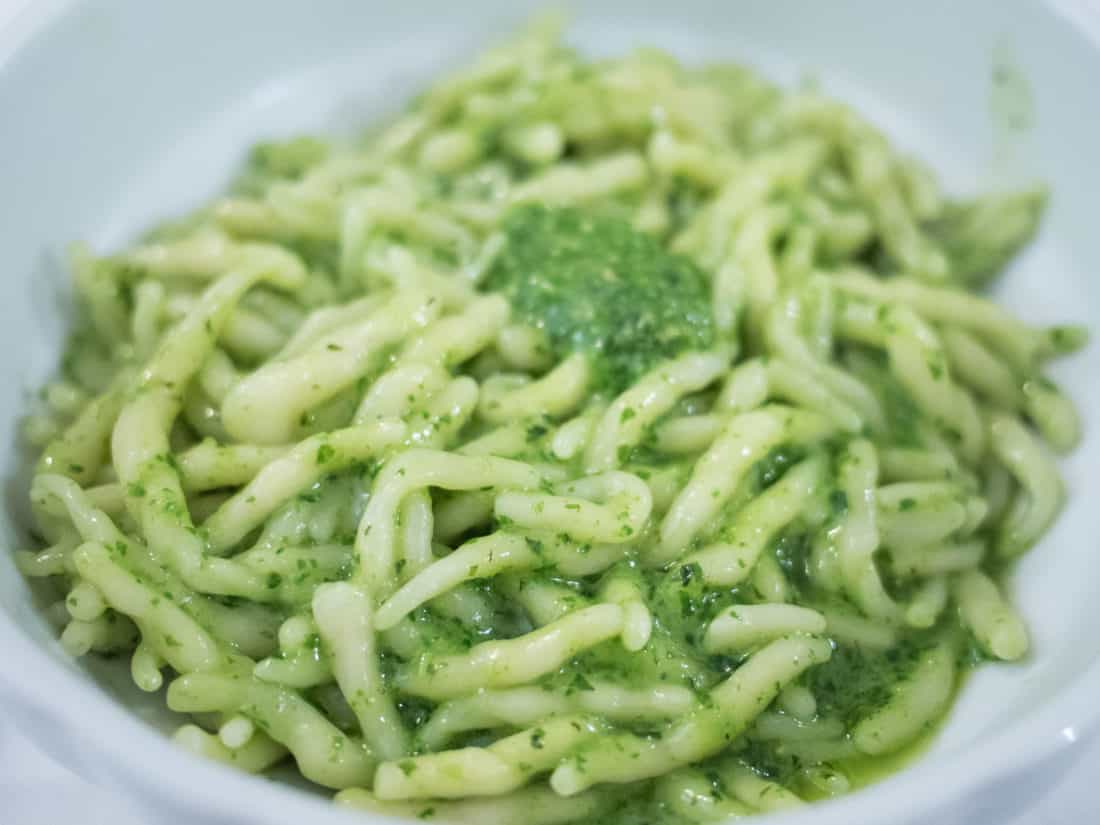
Tuscany (Florence, Siena)
- Panzanella – A salad of stale bread, tomatoes, onions, basil, and sometimes cucumbers. It tastes better than it sounds!
- Pappa al Pomodoro – Another use for stale bread is this tasty tomato soup.
- Ribollita – A hearty winter bean and vegetable soup (yep, there’s some stale bread in here too!).
Puglia
- Orecchiette con Cime di Rapa – Little ears pasta with turnip tops (a type of leafy green vegetable).
- Purea di Fave con Cicoria – Fava bean puree with bitter greens.
- Antipasti della Casa – The house antipasti is our favourite part of the meal in Puglia. It can be an extraordinarily large array of vegetables, cheese, fried things and much more (mostly vegetarian). Only get one between two people and sometimes even then you won’t have space for a main course.
See our detailed guide to Puglia food for many more recommendations as well as our post on the Salento Peninsula of Puglia, as this subregion has even more local specialities.
Campania (Naples, Amalfi Coast)
Don’t miss pizza in Naples!
- Gnocchi alla Sorrentina – Simon’s favourite Italian dish (besides pizza). Gnocchi (potato dumplings) baked with tomato sauce, mozzarella and basil.
- Insalata Caprese – The simple salad of tomato, mozzarella and basil originates from the island of Capri.
Sicily
- Pasta alla Norma – Penne pasta in a tomato and aubergine sauce topped with ricotta salata cheese.
- Busiate alla Trapanese – Long twisty pasta with a type of pesto made from tomatoes, almonds, garlic and basil.
- Pane con Panelle – Chickpea fritters in a roll is a popular street food in Palermo.
Our Sicilian food guide has lots more ideas to try including the many sweets the island is famous for.
Emilia-Romagna (Bologna, Modena)
Emilia-Romagna has some of the best food to eat in Italy. Aside from parmesan cheese and aged balsamic vinegar, you should also try:
- Tortelloni– Pasta parcels stuffed with ricotta and herbs. Vegetarians should get the sage and butter sauce rather than the ragù. Tortellini are similar but smaller and filled with meat.
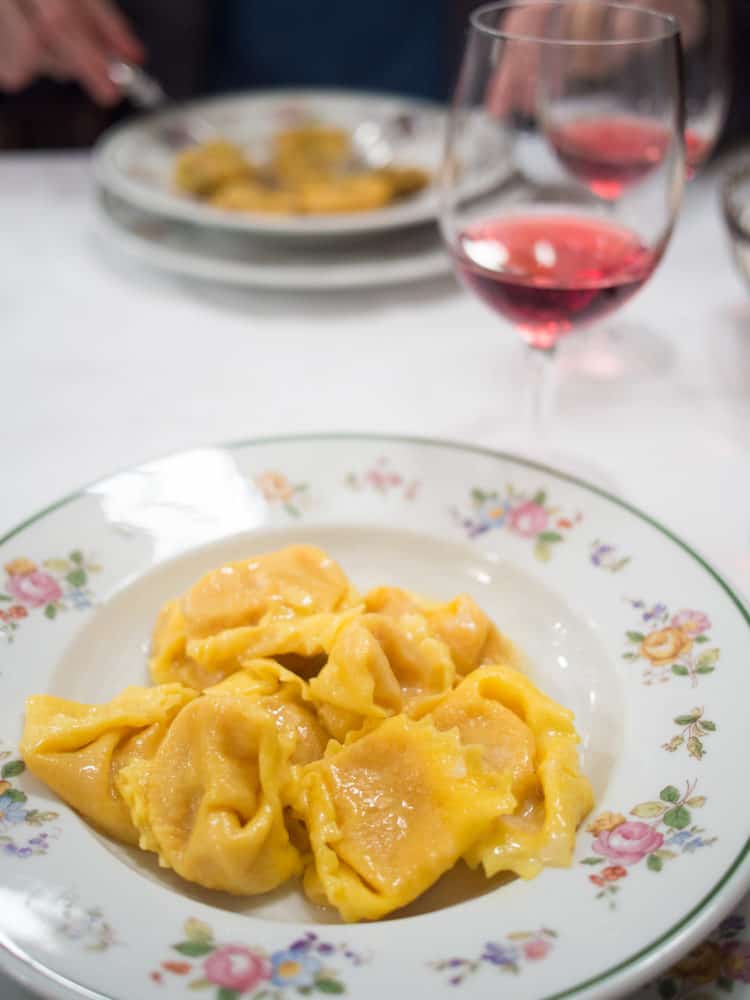
Best Places to Eat in Italy
Our favourite place to eat in Italy is Masseria Il Frantoio, an olive farm with accommodation in Puglia where we indulged in an eight-course tasting menu using produce and olive oil from the farm. It’s also our favourite place to stay in all of Italy.
Otherwise, we’ve eaten in so many amazing restaurants that it’s hard to choose favourites. When choosing where to eat in Italy you can see our restaurant recommendations by destination in these posts:
- 14 Best Restaurants in Matera Italy
- The Best Things to Do and Eat in Testaccio, Rome
- Trastevere Rome Neighbourhood Guide
- Things to Do and Food Tips for Bologna
- 18 Best Restaurants in Lecce, Puglia
- A Day of Eating in Varenna, Lake Como
- Rapallo: The Best Base for Exploring The Italian Riviera
- Where to Eat in the Barolo Wine Region, Piemonte
- The Best Food in Sicily
If you enjoyed this post, pin it!
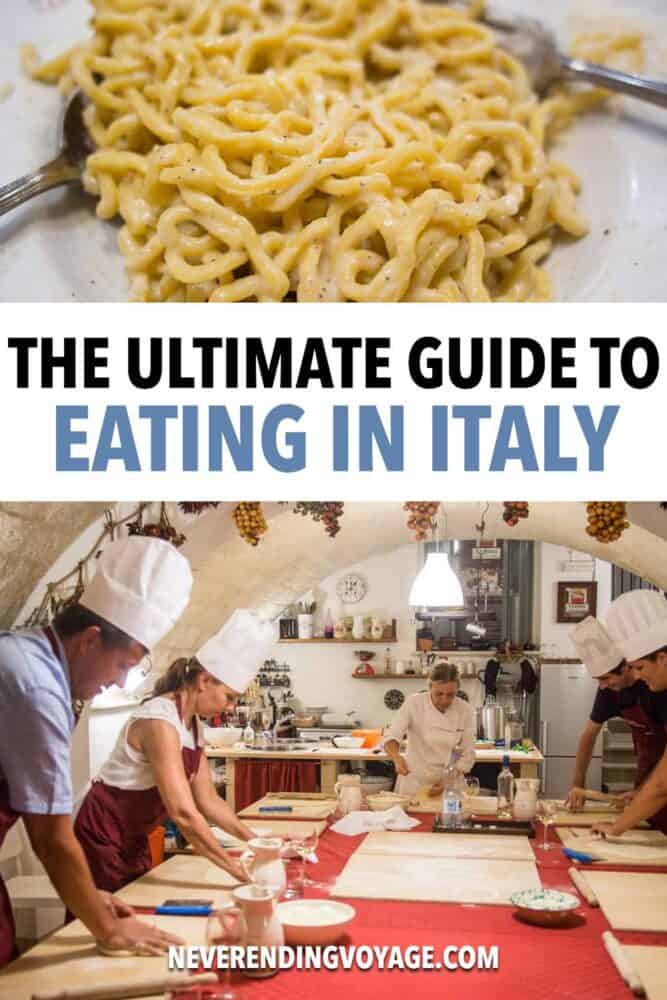
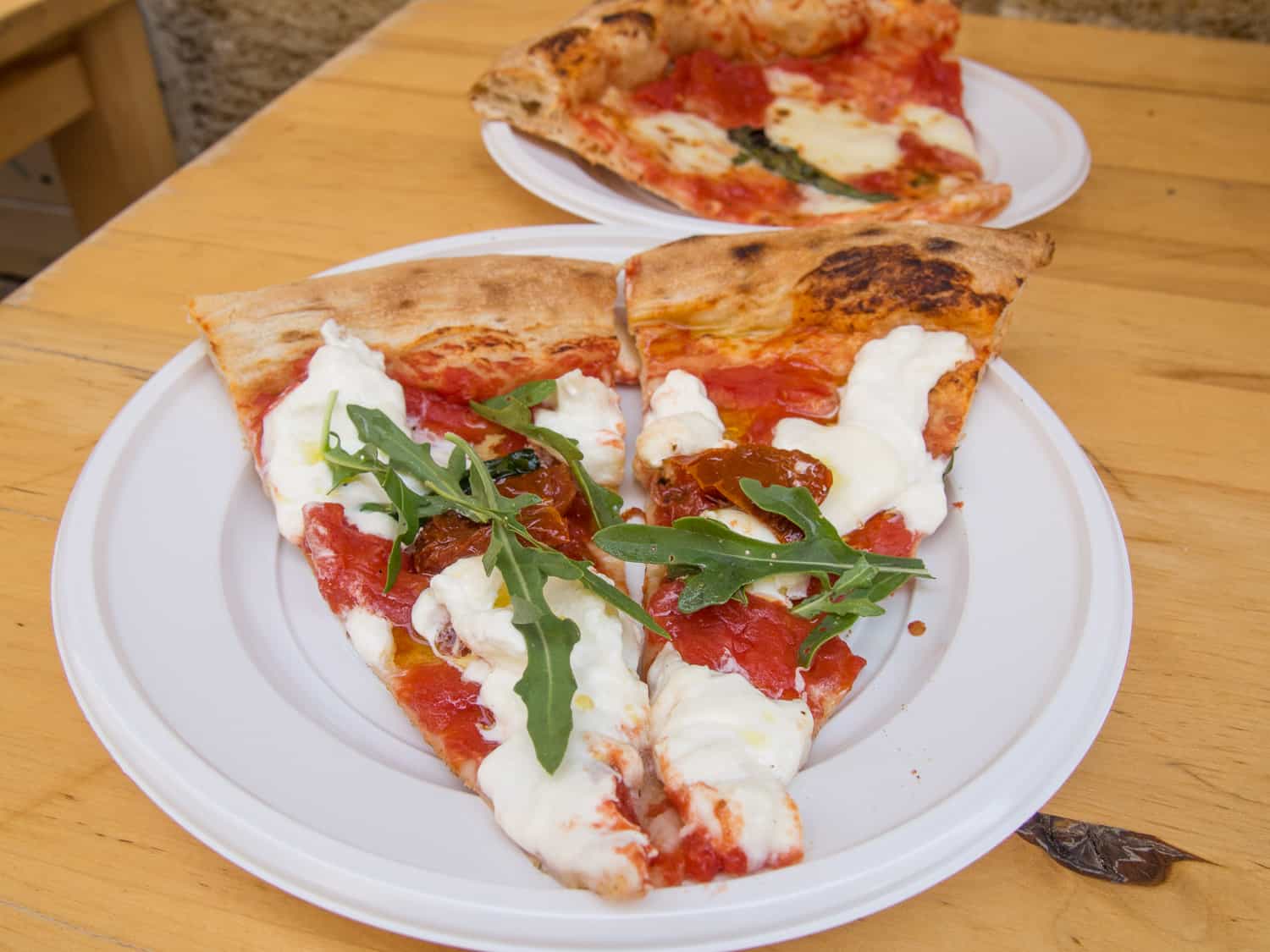
I wish this guide existed before I went to Italy years ago! 🤯 So detailed. Thank you for sharing.
PS. That pistachio and chocolate gelato looks amazing.
Thank you! Pistachio and chocolate is the best combo!
Thank you for this helpful article, I hope to visit many of your recommendations. I have a question: This year, I’m traveling to Rome and Florence for the first time in my life! I am with a group of 10. Would it be possible for my group to find a restaurant that can accommodate us? Do you have any suggestions of places to eat with a large group?
You should be able to find restaurants but I recommend booking for dinners at least. If you want a sit down meal at lunchtime and don’t want to book in advance, I’d recommend going early for a better chance of getting a large table. Enjoy Italy!
Travelling to Italy next month! Thanks for the tips.
I am Italian and this is possibly the most balanced and ‘true’ article on food in Italy by a foreigner I have ever read. Congratulations!
Wow, that’s high praise from an Italian! Thank you!
Great info before heading to Italy.
Very interesting and informative!
I’m saving this post for reference for our trip to Rome and Florence in April! My husband and I: 1) are Pescatarians, and 2) don’t drink alcohol. Before traveling to Paris last year, I spent a lot of time on food translation to make sure we weren’t ordering anything with meat. I’m still a little bit concerned about that in Italy, but our main stress when traveling is often turning down alcohol. (I got dragged to a bar once in Germany, which my friends insisted would be fine, but it was absolutely miserable, with people not taking “no” for an answer.) We live near Napa, CA where it is also a huge part of culture and industry, but that is 10x magnified in certain areas in Europe. This is our first trip to Italy. Any suggestions regarding this? Obviously I will start with a polite “no grazie”, but is this typically enough, or is it more difficult to turn down alcohol? As much as we would love a food tour, we’ve learned from previous experience that they are bad values for us since we don’t eat meat or drink.
Hi Maisy
We do drink so probably aren’t the best people to advise, but I think you’ll be fine. We’ve never had any issues not ordering wine with meals or felt pressured to do so. And bars in Italy serve coffee (and soft drinks) as well as alcohol so that shouldn’t be an issue.
Just don’t expect tap water! Whenever you sit down at a restaurant they’ll ask if you want water “frizzante o naturale” (sparkling or still). Ordering a bottle of water is expected and we just accepted it.
I hope you have a wonderful trip!
Erin
Wonderful information … so excited to be going to Italy . Thank you
A great blog and very helpful information. thanks so much.
The best Italian food I’ve had was in : 1) Aosta, IT–soufflés gnocchis in a light cream sauce. The best ever. I don’t remember the name of the restaurant, but it was on the second floor of a grand stone building. 2) “Mama’s Place” in the hills above Positano. I think the actual name may have been Fattoria La Tagliata (but I won’t swear to it in court). It was farm to table restaurant and mama was in the kitchen cooking. We had all of the courses (served family style) for lunch and the lasagna was especially wonderful. There were a group of us and we all agreed it was one of the best times and meals ever. And, 3) Breakfast at the Hotel Antiche Mura in Sorrento. In addition to the desserts and pastries, we had fresh squeezed orange juice and scrambled eggs.
That all sounds wonderful! Thanks for the recommendations!
Another tip would be to check if the restaurant or trattoria has a blackboard on it with the “menu del giorno“ (menu of the day). It usually lists dishes with ingredients that are especially fresh that day. This is true especially for fish. It’s better to order something from there.
No beer with dinner? Not telling my husband…:) We know we won’t be taken to the police station if we order a cappuccino after 10am, but we do feel it is important to respect local cultural practices, so this is really helpful. Thanks so much for the suggestions!
I live in Italy. There are Italians who have cappuccinos in the afternoon (or gelato, which is much heavier!). There are also people who were born in Italy, whose parents are from another country, and Italy is their country as well. They may have some eating habits that are a bit different, and that’s okay. It’s great to learn about local customs and habits and this is a very informative blog (with lovely food suggestions!) so I’m NOT saying that’s the intent here, but I’ve seen it before where it seems to be implied that little things like what kind of coffee you get during the day is somehow forbidden, when it’s really not that big of a deal. Street harassment is disrespectful, getting drunk in public and making a scene is disrespectful, getting different types of coffee, or different drinks with your food, is not. However, just don’t ask for pineapple on your pizza XD
Sorry, but the minute I open my mouth, Italians will know I’m a foreigner. You provide many helpful tips, which is nice, but if I want a cappuccino later in the day, I’m getting one. Same if I want to share a pizza with someone else. I doubt I’ll get crucified over it but if I do, I’ll come back to let you know. Anyway, I’ve seen young Italians walk by in the late afternoon with big, sugary, frappuccino-type drinks so I just don’t think Italians will gasp and clutch their pearls if my coffee has slightly more (soy)milk than the norm later in the day. Why not relax a bit and let people enjoy themselves how they want to be? And be more secure within yourselves so as not to freak out if you don’t conform to the mainstream 100% of the time.
Hey, this was just a fun post to give people a sense of the food norms in Italy. Obviously you can do what you want and it’s unlikely anyone will say anything.
It’s really nothing to do with conforming to the mainstream – we just find it more interesting and enjoyable to experience life as most Italians do while we are in their country.
I am Roman and I agree with Luca.
If you come to Rome, peel the fried cod fillets (filetti di baccalà fritti); the “Campo de ‘Fiori” market and the pizzeria / bakery at the end of the square; the artichokes “alla giudia” (carciofi alla giudia) fried 2 times; the chicken with peppers (pollo con i peperoni); fried chicory (cicoria ripassata); and the supplì that is like an arancino, but is totally different! (it has the shape of an elongated meatball, is made exclusively with rice with meat sauce and has a heart of mozzarella. The supplì are dipped in the egg to retain the breadcrumbs before frying). An ecstasy for the palate! Enjoy your meal! Greetings from Rome!
Thanks, Marta! We love suppli! We need to visit Rome in artichoke season. Yum!
Fabulous information
I’m going to attempt to do a Full Fun Italian dinner for family
Bike out front with flowers in basket
Italian flag at door
That sounds fun – enjoy!
“Eat pizza with your hands. In a pizzeria you’ll cut the pizza into slices yourself then feel free to use your hands.”
I live here and I often eat pizza with fork. Is not true that italians dislike this.
But eating pizza with your hands is perfectly acceptable in Italy, isn’t it? I didn’t say that you can’t use a fork and knife, just that you are free to use your hands.
What about ‘timballo’ in teramo abruzzi? Or maccheroni alla chittara in teramo abruzzi? Or porchetta sandwich in abruzzi? Or ‘arrosticini’ in abruzzi? Italy is not only Rome, Naples and Puglia!!!
I am italian and this is one of very very very few non-italian blogs that explains correctly how to eat in Italy. May I add a few thigs as follows. 1) The word salami doesn’t exist in Italy, we say salame for singular and plural with the final ‘e’ pronounced like in ’empty’ . The same is for ‘linguine’ and ‘scaloppine’ and all words ending with an ‘e’ . That ‘e’ has to be pronounced like in ’empty’. 2) Never ever pour vinegar on mozzarella, I saw many americans doing that and it’s a sacrilege. It destroys the mozzarella flavour. 3) Mozzarella is only made of buffalo milk. If made with cow’s milk, we call it ‘fiordilatte’. 4) By now 95% of restaurant and shops accept credit cards in Italy, but it is not customary to pay a coffee with a Visa . Remember also that Amex is not welcome because it is very expensive for the owner of the restaurant : the commission he has to pay is 3,5 % . You are in Italy, very probably in a rural setting : do not expect to be in Manhattan ! 5) Last but not least, don’t worry for breakfast. If you have dinner starting at 9pm like most italians do, you’ll simply won’t be hungry in the morning. Therefore you’ll have a light lunch or a proper lunch and then a good dinner at 8.30/9 pm. You won’t need to wake-up starving because you had dinner at 6pm tea-time . Enjoy !
Thanks so much for the extra tips Luca!
that sound so good
Nice article and comprehensive. So many myths are out there about eating in Italy. People are often amazed when we tell them how little we can get a great authentic meal for. Just takes a little research.
I really enjoyed this post. I had the sense that I was touring the cuisine of Italy with you guys. My travel fervor is reawakened!
Ah, thank you Marlene!
I wish I saw this guide before I spent 3.5 weeks in Italy this past May! We mostly traveled the northern parts of Italy – Turin, Milan, Florence, and Cinque Terre. I was there as a university group and one of our instructors is from that part of Italy. He told us a few years ago it was required for all restaurants to accept credit card. We also found a few places that would not accept credit card. Our instructor’s suggestion was to walk out (or pretend to walk out) because it is illegal for them to do that. However, we did find it easier to do contactless (Apple Pay or Google Pay) for credit card purchases. Most restaurants and shops were happier accepting that method of purchase rather than a regular non-Italian credit card because it was faster and didn’t require a signature. Just hold up your phone when presented with the bill or asked to pay, they understood the term ‘contactless’ and knew how to process it.
I didn’t know it was illegal for restaurants not to accept credit cards! There are many that don’t, but then the Italians don’t always obey the rules they disagree with :)
Thanks for the tip about contactless. Simon used his Apple Watch (with Apple Pay) in some shops but didn’t think it was possible in restaurants.
Worried I will feel weird as a recovering alcoholic in Italy; like it is mandatory to drink wine ( my former drug of choice!)
marie
Not at all. Plenty of Italians just have water with a meal.
Thank you for that
I want to learn so much about there culture
I’m going back to Italy in Jan2019
Can’t wait
Annette?
I’m from Bologna, and, as Italian I can say what you’ve written is very accurate *applause*.
The fact you’ve mentioned “spaghetti Bolognese” has made my day. Also in Italy there are people convinced is my local dish…NO WAY. Tagliatelle al ragù are simply the best way to eat ragù. And this post reminds me when I was a child and I was used to help my granny while making pasta, especially tortellini :)
As you’ve written: food is a serious thing here!
The only thing I can say is about cappuccino: you can have breakfast with cappucino + brioche, BUT you can’t have cappuccino at the end of your lunch or dinner! ;) That’s a German tradition-horrible for us!
Your blog is very nice, and there are so many posts to read! Thanks for all the informations /tips/ travels!
Aw, thank you! That means a lot coming from an Italian :)
I was in Rome/Italy Jan 2018
I spent two weeks there.I needed to be
there longer.I loved it so much
I learnt abit of the language before going
The Italians certainly appreciate you knowing
there language.Cant wait to go again
Annette❤️
A lifetime is probably not enough for Rome! I hope you make it back soon!
Hi
I’m heading to Italy in Jan 2019
This time I hope to spend a few days in
Venice.Drink great wine and great food
❤️❤️❤️
Great post!! we are off to Italy in August, im so excited. Doing all the research i can!!! Thankyou!
Never order cappuccino after 11.00 h in the morning ! It is coffee for your breakfast
Hi I’m off to sorentto in September 2018
Im soooooo excited.
I’m learning a few Italian words and phrases.
Will I be frowned about if I get them a little bit wrong.
Is it OK to try ?
I think it’s the most beautiful language.
Italians will really appreciate it if you try the language even if you get things wrong. Go for it! Have an amazing trip!
Delightful,well written and a feast for the eyes.Then there’s the food!
As the former owner of a travel agency,I always encouraged clients to get off the beaten paths ,meet the locals and experience the country from their own perspective.I do the same and have never had a “bad” trip!
Thank you for this .
Great tips! I followed some of them during my trip to Rome. The food in Italy is fantastic. The country should be named Eataly, not Italy. :)
Guess I’m going to be filling up on lots of water on my trip to Italy lol.
Neither my husband or I enjoy wine. Wine to me is one of the worst tasting things next to beer.
Fantastic blog!
Is there a fee to join your Never Ending Voyage newsletter??
No, it’s free.
Definitely agree with the tip about eating gelato every day! When I visited Italy in 2005, I did so in July and it was SO hot that gelato was about all I wanted to eat. This wasn’t really a hardship…
Found the rest of your tips really useful – especially about not having to worry about ordering every course. Since starting our backpacking journey, my stomach has shrunk considerably and I doubt I could make it through multiple Italian courses!
I would have definitely broken a few eating rules without reading this! So breakfast is not a large meal? What about for workers (and myself) who need a huge meal of energy in the morning, can big meals be found in the a.m.?
No, breakfast is just a cornetto (Italian croissant) and coffee. I’ve never heard of anyone eating much more than that. I think you’d have to cook for yourself to have much more. Although we are staying at a great B & B at the moment where we get lots of homemade cakes, bread, cheese and prosciutto.
Usually people working in the offices take a break and have a second/third espresso around 11am. If they’re hungry they eat another croissant or a sandwich. The more you go south the more choice of pastries you’ll find in the morning. Lunch is still an important meal, many people stop for 1 to 2 hours to eat (the more you go south the longer break you find).
I’m about to have lunch and reading this post with all the fab photos is pure torture!
“Eat gelato every day. It’s that good.” – I totally agree! This is one thing I did without fail every day when I was last in Tuscany.
Don’t be scared to explore – leave the beaten track, head for side streets & alleys… you’ll be surprised by what you find. Make some effort to order in Italian and you may be treated to an ‘on the house’ Italian liqueur after your meal.
Definitely agree with the point about not going to tourist restaurants with english menus. We were in Verona recently and the first night (in the main tourist square) paid 13 euro each for what tasted like microwaved pasta.. so for the next 2 nights we explored all the back streets of the town and found some amazing foods and people.. and much cheaper
Getting away from the main tourist areas and exploring the backstreets is the best way to find good restaurants. Glad it made up for your first night.
Love those food photos – I’ve been drooling all over my keyboard! Haha, the old person standing outside a restaurant begging you to come in trick. I think most travellers fall for it once and then never again! Great tips.
Last time I went to Italy I woke to find my bff staring intently at the ceiling, scowling. She had gelato induced insomnia and couldn’t sleep, because she couldn’t decide what flavour to eat in the morning!
Now I have to go find the best Italian restaurant in San Francisco. Totally your fault :)
Haha! I always struggle to choose a flavour while Simon just goes with chocolate every time. He has been known to have two different chocolate flavours together.
Let us know the best Italian in SF so we can visit when we’re there!
Great tips! I made a few mistakes on my first visit to Italy but it’s easy to get things right after a while. Just look to the locals :)
Everyone does at first but yes, following the lead of the locals will lead to the tastiest eats.
Great tips – now I’m hungry…!!
I spend a fair amount of time in Italy. I loved the pics and everything that you wrote was exactly how I see and find genuine Italian eating. Enjoy yourselves. I am looking forward to being back in the foothills of the Dolomites in two weeks time. Your posts are brilliant. :->
Thanks Jenny and glad you’ve taken advantage of these tips too.
Oh my gosh I think I MUST go back to Italy. I went when I was 18, and while I ate gelato every day (once at 9 a.m. outside the Colosseum), I didn’t have nearly the same appreciation of quality that I do now. Swooning for some of that gorgeous pizza! Buon Appetito!
You can never visit Italy too many times. I’m on my 8th trip here!